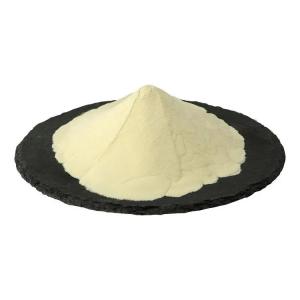Phosphatidyl serine is added to veggie chips.
Time:2025-08-21Veggie chips, made from ingredients such as potato, sweet potato, beetroot, carrot, or other vegetables, are a popular category of convenient snack foods. As consumer interest in functional and value-added snacks grows, phosphatidylserine (PS) has been introduced into veggie chip formulations. The incorporation of this phospholipid provides opportunities for enhancing product innovation, particularly in terms of formulation stability, ingredient interaction, and product differentiation.
Characteristics of Phosphatidylserine
Phosphatidylserine is a naturally occurring phospholipid, composed of glycerol, fatty acids, phosphate, and the amino acid serine. It is amphiphilic, allowing it to interact with both aqueous and lipid-based components within food systems. This dual functionality is particularly useful in snack products such as veggie chips, which combine carbohydrates, proteins, fats, and seasonings.
Role in Veggie Chip Formulations
Emulsification and Ingredient Distribution
During the preparation of veggie chips, PS can act as a natural emulsifier.
It assists in dispersing seasonings, oils, and other functional additives evenly across the chip surface.
Structural and Textural Support
In fried or baked veggie chips, PS may influence the interaction between starch and lipids.
This can affect porosity and crunchiness, contributing to desirable texture attributes.
Stability Under Processing
Veggie chips are often exposed to high temperatures during frying, baking, or vacuum drying.
Phosphatidylserine shows relatively good thermal resilience, helping maintain its integrity in the finished product.
Flavor Release
By integrating into lipid phases, PS can modulate the release of flavor compounds during consumption, supporting a more consistent sensory profile.
Formulation Considerations
Source of PS: Typically derived from soy or sunflower lecithin, ensuring compatibility with plant-based snack positioning.
Processing Method: Frying, baking, or extrusion methods need to be optimized to minimize potential degradation of PS.
Dosage and Uniformity: Careful formulation is required to balance phosphatidylserine addition with the natural taste and texture of veggie chips.
Shelf-Life Stability: Protective strategies such as microencapsulation or antioxidant co-formulation can be applied to maintain PS stability during storage.
Applications and Market Potential
Functional Snack Positioning: Veggie chips enriched with phosphatidylserine can be positioned as premium or innovative snack offerings.
Convenience Products: Single-serve packs or multipacks with PS fortification cater to on-the-go consumers.
Customization: Different vegetable bases allow for diverse product lines with tailored seasoning profiles combined with phosphatidylserine enrichment.
Conclusion
The addition of phosphatidylserine to veggie chips represents a step forward in merging traditional snacking formats with modern formulation strategies. By leveraging its emulsifying, stabilizing, and structural properties, PS can be successfully integrated into veggie chip recipes without compromising sensory qualities. This innovation reflects the broader trend of aligning convenience snacks with functional ingredient technologies, offering opportunities for product differentiation in a competitive snack market.


 CN
CN





